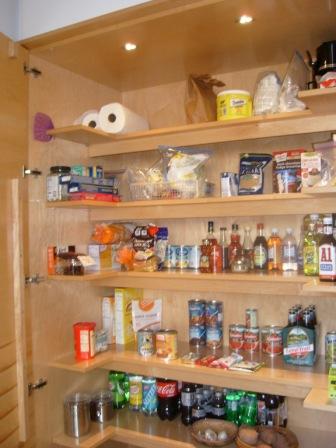Purpose of Back Relief Cuts on Mouldings
Mouldings are machined on the back as well as the face, for several important reasons. August 23, 2006
Question
What is the relief cut on the back of base board moulding and casing for? Is it needed? How deep and how wide should it be?
Forum Responses
(Architectural Woodworking Forum)
From contributor A:
There are at least three good reasons for the relief cuts on the back sides of mouldings.
First, the hollowing out reduces the strength or stiffness of the moulding, allowing whatever fastening system that is used (nails, staples, etc.) to better hold the moulding firm to the surface it is attached. In other words, the relief cut reduces the wood's ability to cup.
Second, in the instance of door casing, the relief cut will allow the casing to span an uneven surface, a frequent condition between the edge of a door jamb and sheetrock or plaster.
Third, if the installer prefers not to use nails or staples, a .060" to .090" deep relief cut in a baseboard is a good retainer for copious amounts of construction adhesive.
I don't know of any standards for depth or width, but that doesn't mean someone hasn't established those parameters in some publication or other. I just make mine look right, and haven't gotten any complaints.
From contributor B:
Contributor A did a excellent job in explanation, and I would like to add just one small note. On base I like to leave about 1" to 1-1/2" on the bottom before I start the backout, the reason being the center of nail guns used in installation will hit in this area. It could lead to splitting of the mouldings if you have the backout too low to the floor.
From Dr. Gene Wengert, technical advisor, Sawing and Drying Forum:
Another reason, historically speaking, for the machining on the rear was to offset the casehardening stress. When molding the face, the piece would typically curve toward that face. Then by machining the rear, the stress would be balanced. Today, the stresses are relieved in the kiln, so there is no need to relieve stresses by machining the rear side. This was also done to wood flooring for the same reason.
From contributor D:
Another reason, and perhaps the original one, along with spanning irregular surfaces, is wet plaster. The relief cut kept the flat surface of the casing and base off the wet wall surface and also provided a bit of air circulation behind the wood, which helped prevent cupping and warping. Plaster is pretty much the origin. The relief cut helped the molding span over the plaster grounds and the slight high-spot right at the back of a jamb.
From contributor E:
In addition to all of the above, the relief on moulding helps to offset the fact you are taking more material off the front of a casing than off the back. That creates some stress in the board and the relief cut relieves some of that. In the case of flooring, the back out cut are also put there to reduce the weight so more material can go on a truck. Also the mills want more saw dust because they fire their drying kilns with it. I typically would come in 5/8” from the edge of casings at about .100 deep. Resist the urge to split the relief in two on wider casing. If the casing does cup, it will rock on that center point. I put relief cuts on big crowns when there was enough room. A deep cove out of 6/4 or 8/4 will want to cup especially if there is any tension from the kiln.
From contributor F:
In addition to all the excellent answers above, the remaining material on the back can be quickly hand planed if necessary in certain situations - to straighten out a pilaster for example.
From contributor G:
As far as sizes go - I usually stay about 1/4" from each side and 1/16 - 3/32 deep. It seems the jambs are always in or out from the wall more than I would like so I go deeper than some might.
From contributor C:
Both contributor E and I are describing the same effect - that is, casehardening is really a stress that is left in the wood. Machine one side more than the other and cupping results.
